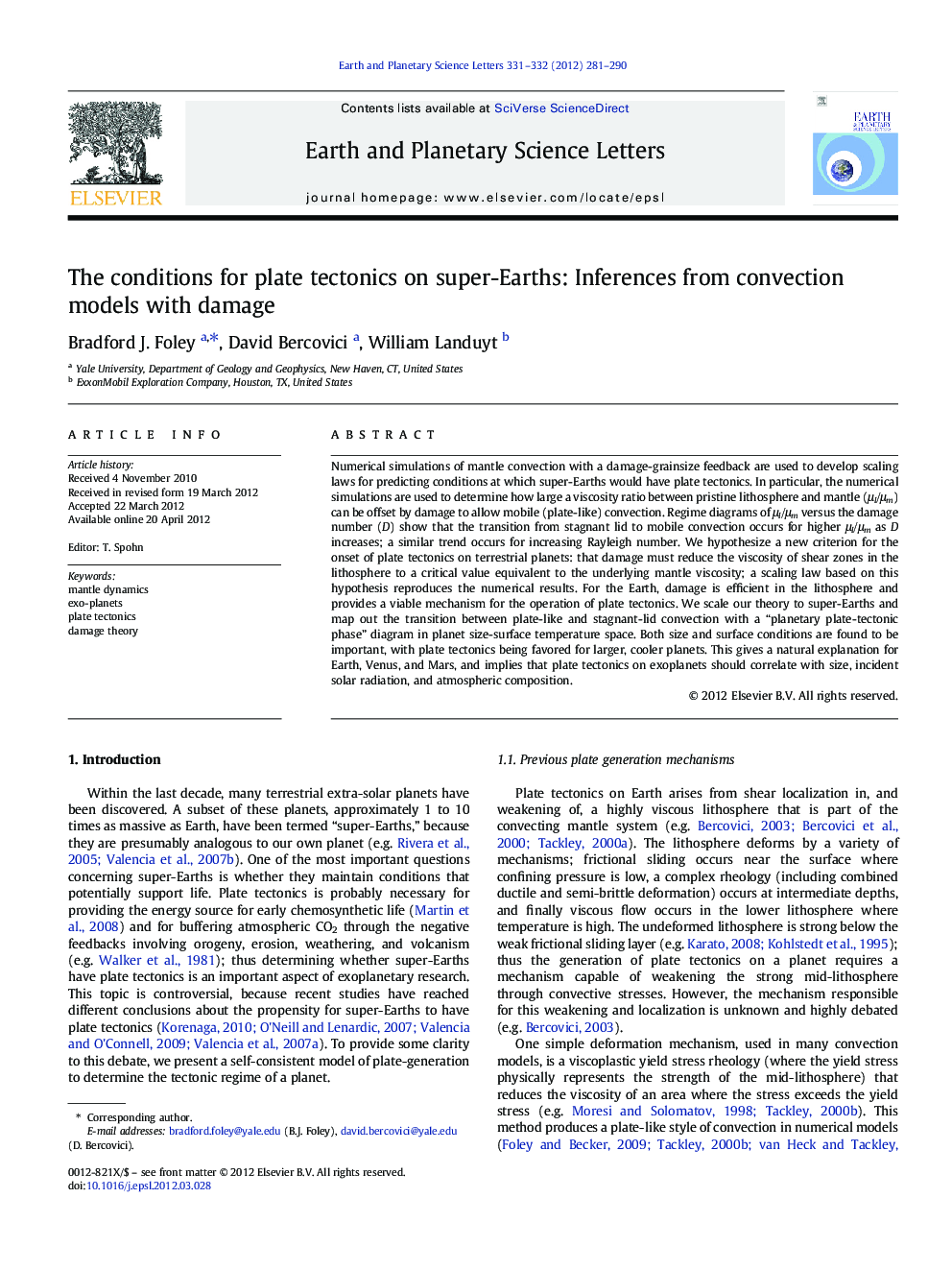| Article ID | Journal | Published Year | Pages | File Type |
|---|---|---|---|---|
| 4677492 | Earth and Planetary Science Letters | 2012 | 10 Pages |
Numerical simulations of mantle convection with a damage-grainsize feedback are used to develop scaling laws for predicting conditions at which super-Earths would have plate tectonics. In particular, the numerical simulations are used to determine how large a viscosity ratio between pristine lithosphere and mantle (μl/μm) can be offset by damage to allow mobile (plate-like) convection. Regime diagrams of μl/μm versus the damage number (D) show that the transition from stagnant lid to mobile convection occurs for higher μl/μm as D increases; a similar trend occurs for increasing Rayleigh number. We hypothesize a new criterion for the onset of plate tectonics on terrestrial planets: that damage must reduce the viscosity of shear zones in the lithosphere to a critical value equivalent to the underlying mantle viscosity; a scaling law based on this hypothesis reproduces the numerical results. For the Earth, damage is efficient in the lithosphere and provides a viable mechanism for the operation of plate tectonics. We scale our theory to super-Earths and map out the transition between plate-like and stagnant-lid convection with a “planetary plate-tectonic phase” diagram in planet size-surface temperature space. Both size and surface conditions are found to be important, with plate tectonics being favored for larger, cooler planets. This gives a natural explanation for Earth, Venus, and Mars, and implies that plate tectonics on exoplanets should correlate with size, incident solar radiation, and atmospheric composition.
► Mantle convection simulations with damage produce plate-like behavior. ► Viscosity in a shear zone must be reduced to mantle viscosity for mobile convection. ► Larger planets are more likely to have plate tectonics due to higher stresses. ► High surface temperatures increase healing and cause stagnant lid convection. ► Plate tectonics is favored for large planets with cool surface temperatures.
